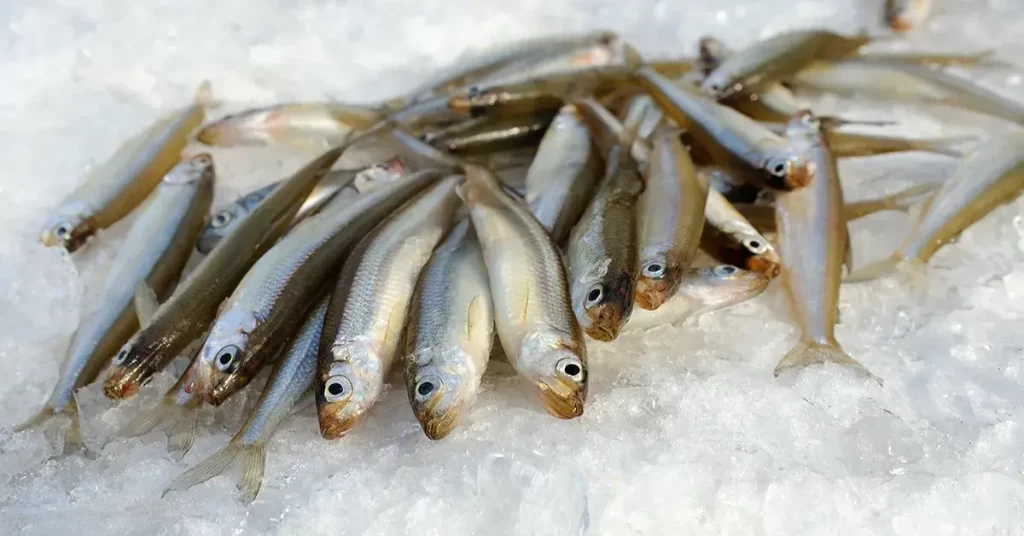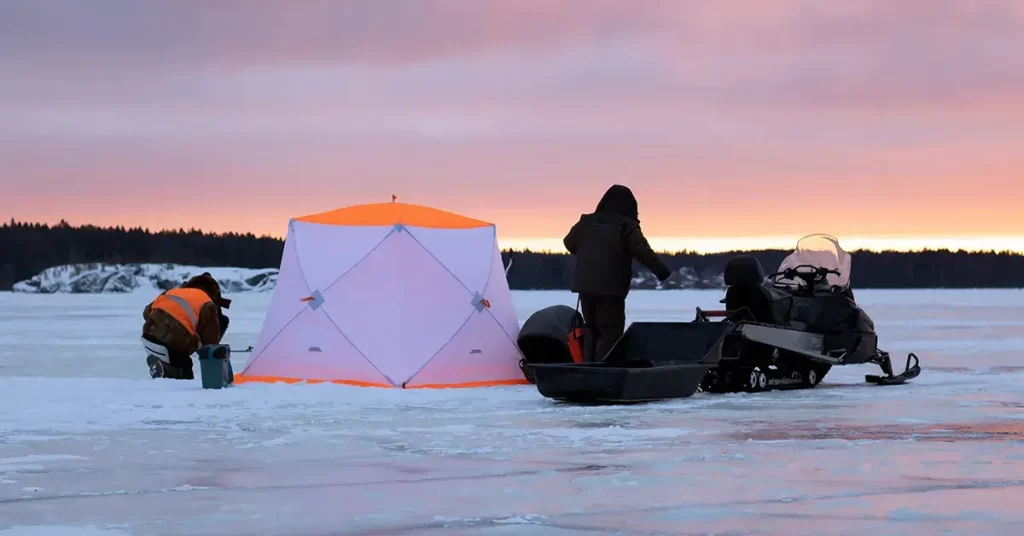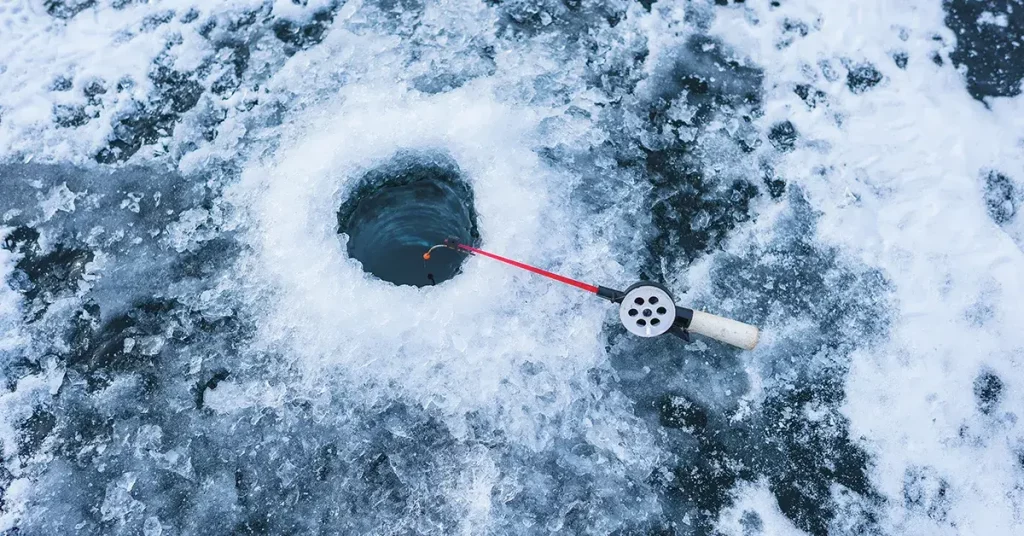Rainbow smelt might seem more of a passing novelty than a viable source of entertainment for trout and bass anglers. Still, there’s something undeniably satisfying about pulling line and line of caught fish through a tiny hole in the middle of the ice.
That doesn’t mean that every drop is a sure bet, but these tips and tricks can help you catch more rainbow smelt than ever before while smelt ice fishing.
Know Your Enemy
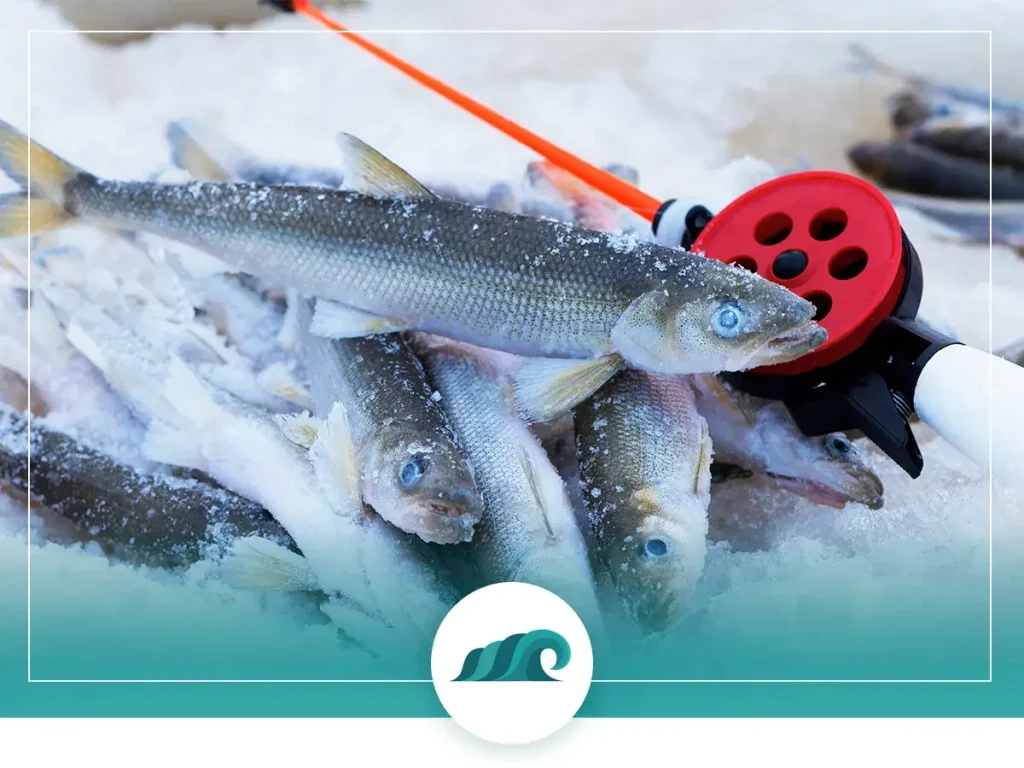
It pays to know what you’re working with if you’re planning your first smelt ice fishing trip for the coming winter. Here are some smelt ice fishing tips that are sure to help you land a catch.
Slender, silvery smelt only reaches a little over half a foot in length and hardly moves the scales at 3 ounces. They often feature a lighter-colored underbelly and iridescent side scales that throw shades of pink, purple, or blue in the proper lighting.
Fishermen new to smelt ice fishing might confuse these silver fish with anchovies or sardines, as they are similar in size and color.
Smelt are aggressive predators despite being such small fish. They feed on aquatic invertebrates and crustaceans when they are young but are more than happy to make a meal of sculpins, minnows, marine worms, and even smaller smelt.
Drop a Light to Catch Smelt
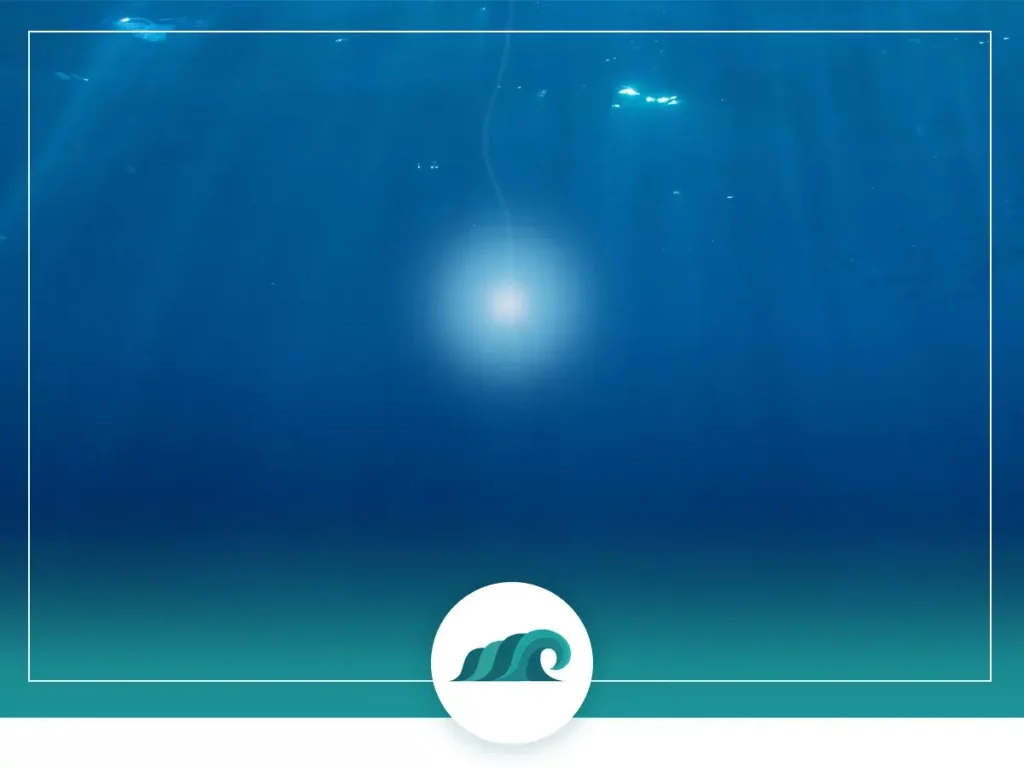
Many fishermen attract schools of smelt by dropping a light through the ice. The glow attracts tiny phytoplankton, creating a congregation of minnows looking for an easy meal. Once hungry schools of smelt catch sight of the feeding frenzy, they bite on anything that looks tasty, including the bait at the end of your hook.
Small Fish, Light Rigs
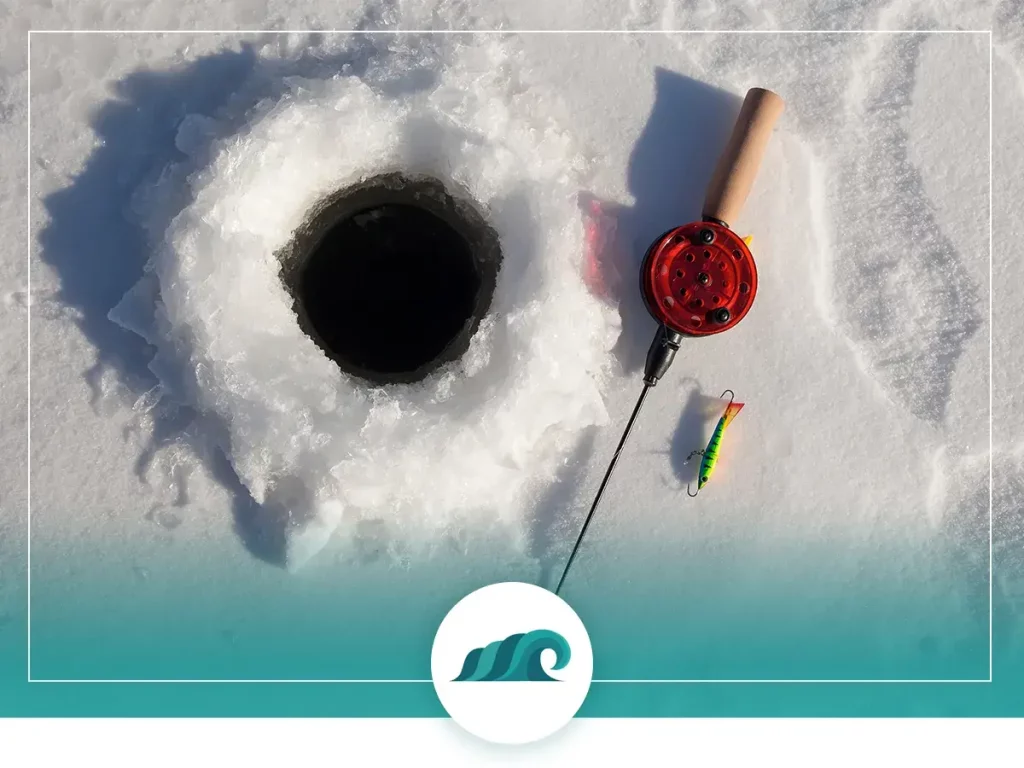
When it comes to your rig, you’ll want something light and fast but with a thick line strong enough to handle the smelt’s salmon-like fighting spirit.
Rods
Titanium and fiberglass rods are your best bet thanks to their sensitive tip, a necessary factor when trying to catch smelt. They’ll alert you to even the tiniest bite but won’t let you down when it’s time to pull in your line with multiple fish on the hooks.
Reels
Most ice anglers forgo reels altogether, opting instead to hand line. This is particularly effective with smelt, which tends to stay near the middle of the water column, slowly moving upwards as the cold night presses on.
If you’d prefer to be ready for anything, a spinning rod will give you better access to particularly mobile schools. You’ll likely want to stick with fishing one hole at a time, as it can quickly become quite the task to keep the tiny fish from pulling the line further out under the ice.
Lures
Hali jigs make an enticing vertical presentation with a chain hook that lets your baits wiggle temptingly underneath the highly visible minnow-like body. When you want to switch it up from a Hali jig, jigging spoons are popular for ice fishing thanks to their side-to-side sway that creates an attractive bait fish lure down the water column.
Fill Buckets Faster with Sabiki Rigs
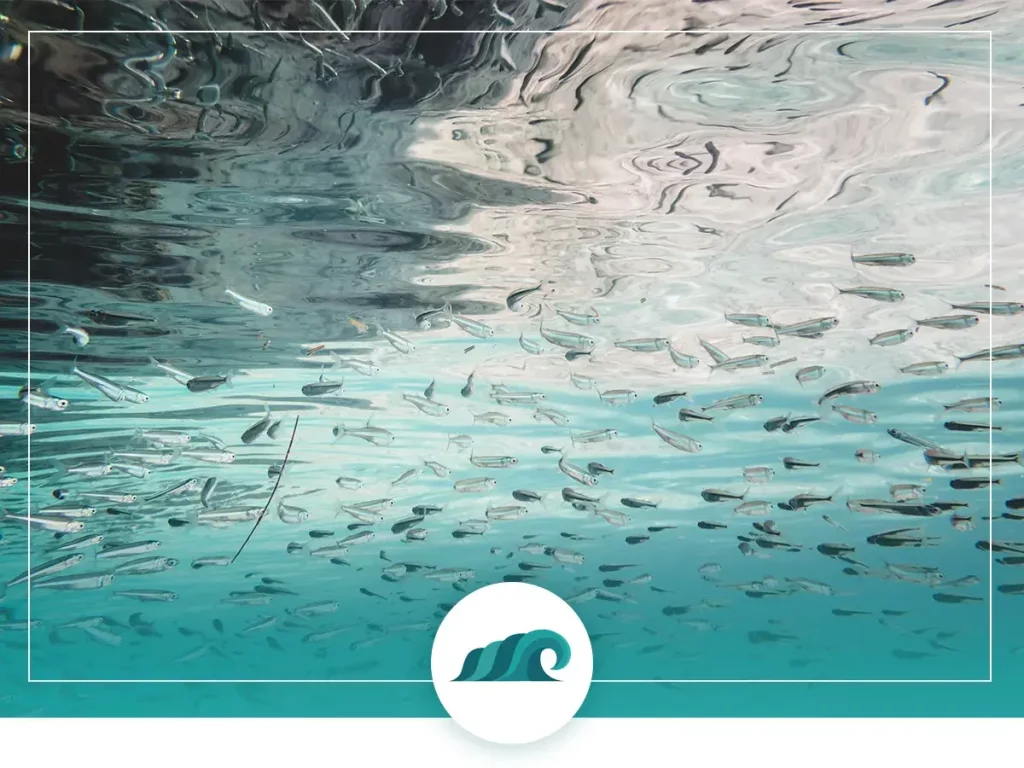
Because they travel almost exclusively in schools, the best way to catch smelt is with multiple hooks. This is one of the best smelt ice fishing tricks to keep in your back pocket.
Sabiki rigs are ideal for catching smelt because they have a stiff main branch with 6 or 8 branch lines. Anglers must watch their lines closely and hesitate before pulling it through the ice to give the passing school time to bite every hook.
Bait Options Are Nearly Limitless
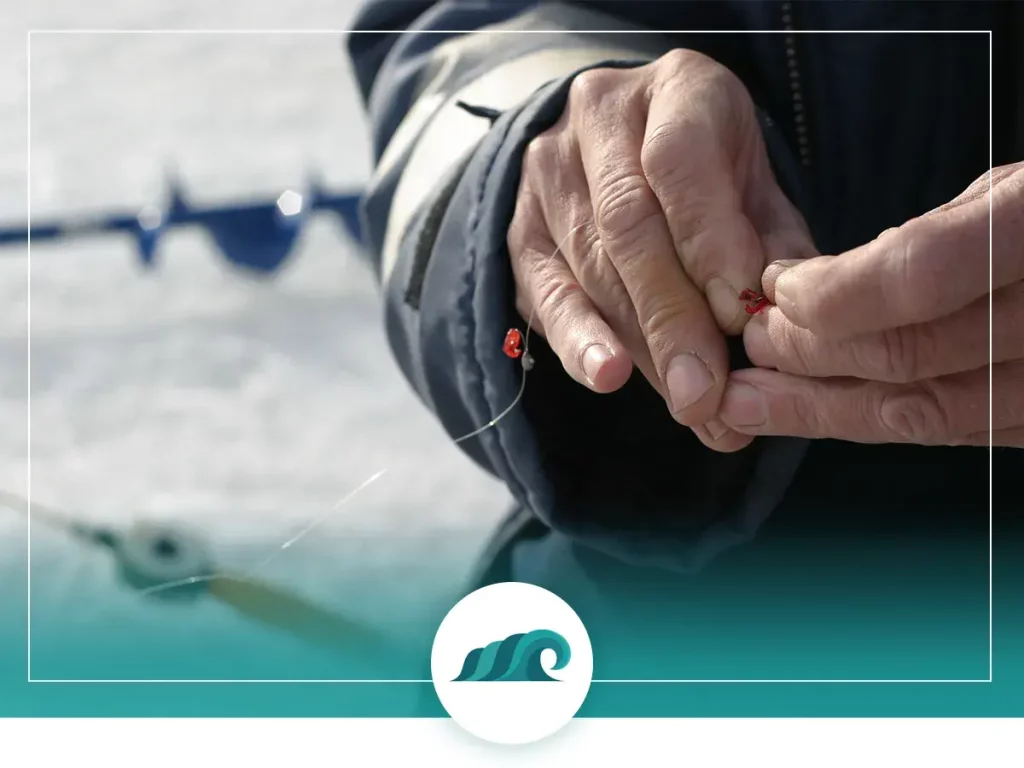
Fishermen willing to brave the subzero temperatures of a frozen lake for a bit of ice fishing won’t have to work very hard to catch smelt. These frenzy-feeding predators will take just about any bait fish or worms, as long as you’re working with a small hook that they can get in their mouths.
Sand Worms and Blood Worms
Sand worms and blood worms are two of the most popular baits for smelt ice fishing, thanks to their low-cost and high-catch rate.
Use Bait Fish
If you’d like to use what you already have on hand from previous fishing trips when catching smelt, these little fish are just as likely to feed on cut bait fish as they are worms. Small pieces of alewives, anchovies, or even other smelts will attract schools in search of an easy meal.
Artificial Jigs and Spoons
If you want to head out on the ice but lack worms or live baits, there’s still hope of catching smelt with artificial jigs or spoons. Small jigs tipped with yarn are particularly effective. Once smelts get their teeth on the string, they get tangled up in the fibers, and it’s nearly impossible for them to drop the hook.
Smelt Ice Fishing Destinations
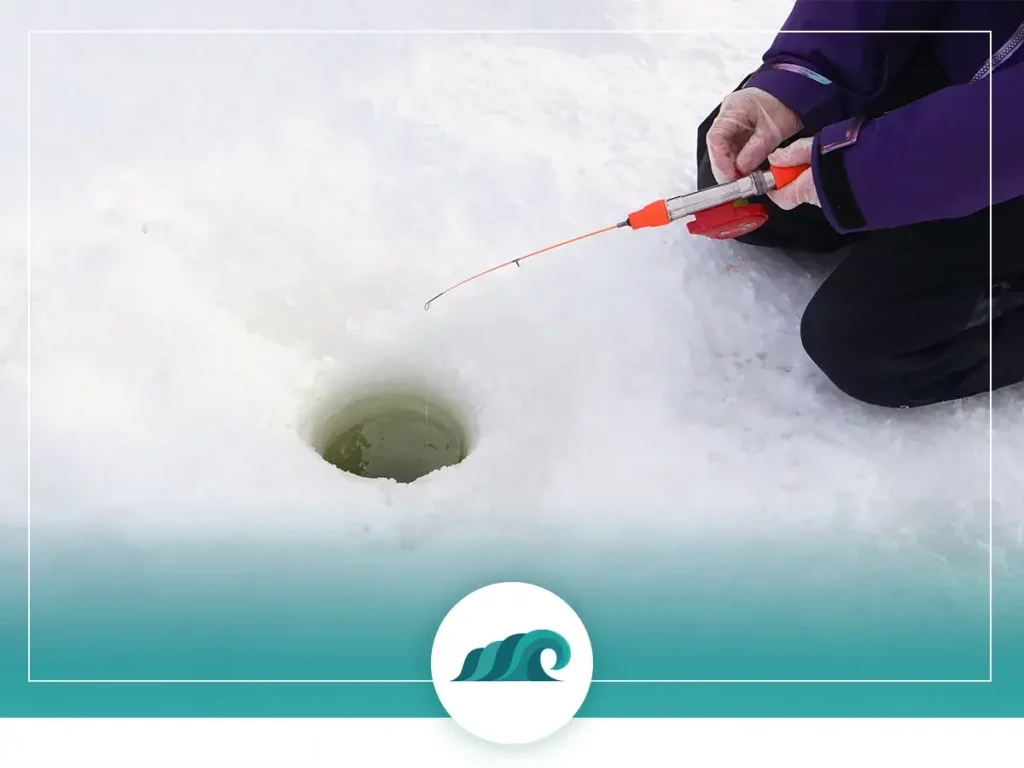
Are you looking for the best lakes and rivers for a bit of smelt ice fishing? We’ve got some of the best destinations for finding flocks of these silver-scaled fish just waiting for an eager angler.
Keweenaw Peninsula, Michigan
Smelt populations have dropped in many of the Great Lakes where they once thrived, but a few tributaries across the Keweenaw Peninsula still offer a satisfying fishing experience.
Try Keweenaw Bay, Crystal Lake, or Lake Charlevoix for your best bet at a big catch on your next smelt ice fishing trip.
Lake Sakakawea, North Dakota
The smelt population has continually increased since rangers introduced the species to the area in 1971. Seasonal spawning migrations have distributed the fish along the Missouri River and its tributaries.
You’ll find them in their most significant numbers when they migrate to spawn shortly before the spring thaw.
Kennebec River, Maine
Not only is Maine an excellent location for smelt ice fishing, but you’ll never find yourself short on bait, as it is home to one of the only marine worm fisheries in the United States.
Once you’ve stocked up on the bountiful stock of bait worms available, hit the ice on tidal rivers along the coast.
Curonian Lagoon, Lithuania
For anglers willing to brave a Lithuanian winter, smelt ice fishing in the Curonian Lagoon with reward you with large schools of little fish migrating from January to March.
This mass migration across the lagoon to the tributaries of the Nemunas River has spawned a centuries-old tradition, with tens of thousands of enthusiastic fishermen gathering at night to cast their nets and set their rods.
Wrapping Up
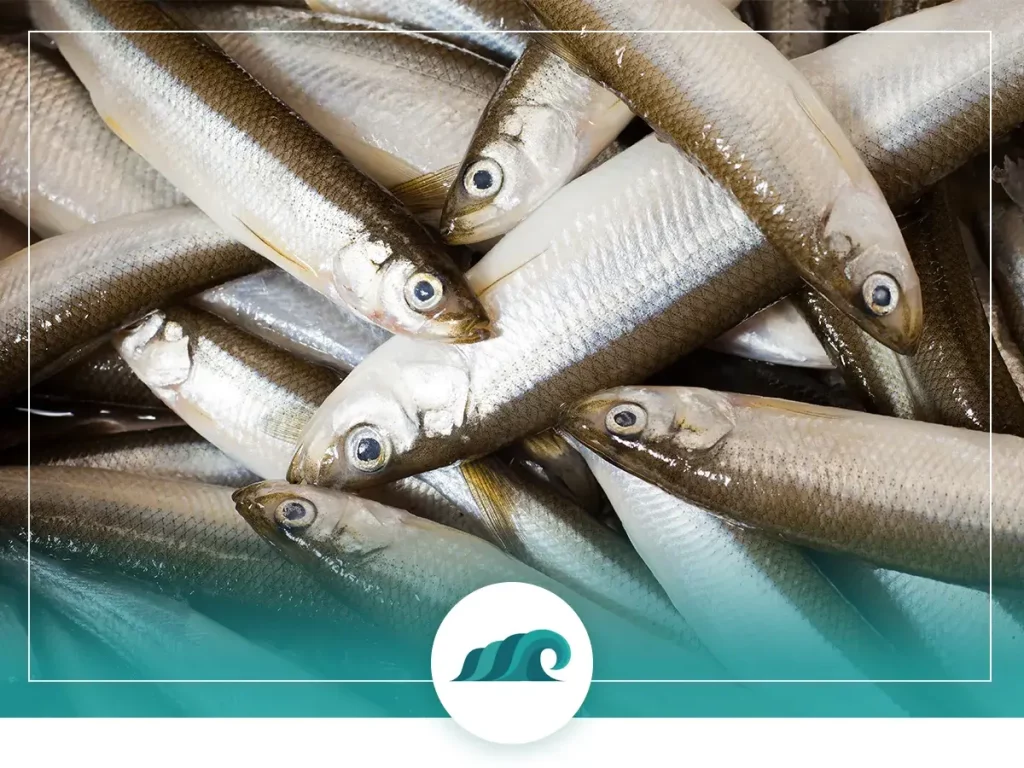
Once you’ve hauled in buckets of smelt, be prepared for the tedious task of butchering. These tiny fish don’t have many innards, but you’ll need to cut off the head before splitting the belly to remove any milt.
From there, either freeze them for next year’s bait or, better yet, get a pan of hot oil and a light batter ready for frying.
Though smaller in size, smelt still make a great meal when fried up. They’re equally delicious for bigger game and the anglers who catch them. Next time you’re out on the hard water, maybe try out smelt ice fishing to see what you think.

